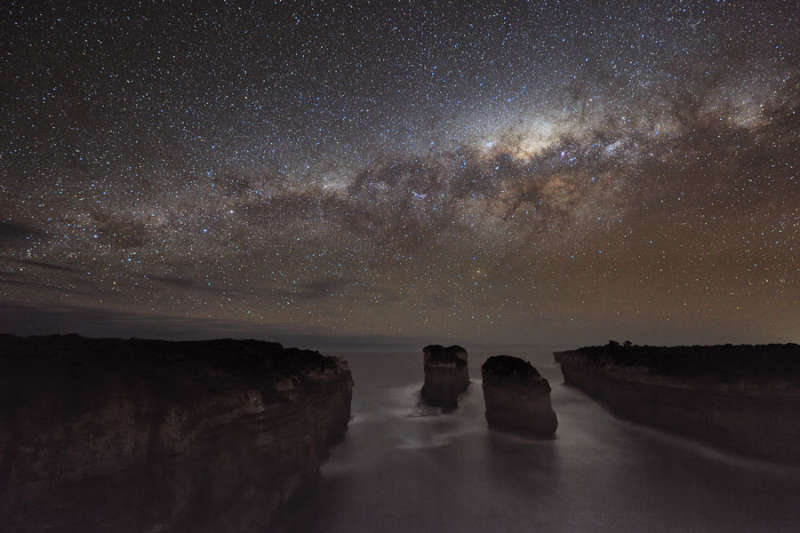Credit & Copyright: Alex Cherney
(Terrastro)
Explanation:
Have you ever seen the Milky Way's glow create shadows?
To do so, conditions need to be just right.
First and foremost, the sky must be relatively clear of clouds so that the
long band of the
Milky Way's central disk can be seen.
The surroundings must be very near to completely dark, with no bright
artificial lights visible anywhere.
Next, the
Moon cannot be anywhere above the horizon,
or its glow will dominate the landscape.
Last, the shadows
can best be caught on long camera exposures.
In the above image taken in
Port Campbell National Park,
Victoria,
Australia,
seven 15-second images of the ground and
de-rotated sky were digitally added to bring up the needed
light and detail.
In the foreground lies
Loch Ard Gorge, named after a
ship that tragically ran aground in
1878.
The two rocks pictured are the remnants of a collapsed arch and are named Tom and
Eva after the only two people who survived that
Loch Ard ship wreck.
A close inspection of the
water just before the rocks will show shadows in light thrown by our
Milky Way galaxy.
Low clouds are visible moving through the serene scene in
this movie.
1999 2000 2001 2002 2003 2004 2005 2006 2007 2008 2009 2010 2011 2012 2013 2014 2015 2016 2017 2018 2019 2020 2021 2022 2023 2024 2025 |
Yanvar' Fevral' Mart Aprel' Mai Iyun' Iyul' Avgust Sentyabr' Oktyabr' Noyabr' Dekabr' |
NASA Web Site Statements, Warnings, and Disclaimers
NASA Official: Jay Norris. Specific rights apply.
A service of: LHEA at NASA / GSFC
& Michigan Tech. U.
|
Publikacii s klyuchevymi slovami:
Milky Way - shadow - Mlechnyi Put'
Publikacii so slovami: Milky Way - shadow - Mlechnyi Put' | |
Sm. takzhe:
Vse publikacii na tu zhe temu >> | |
